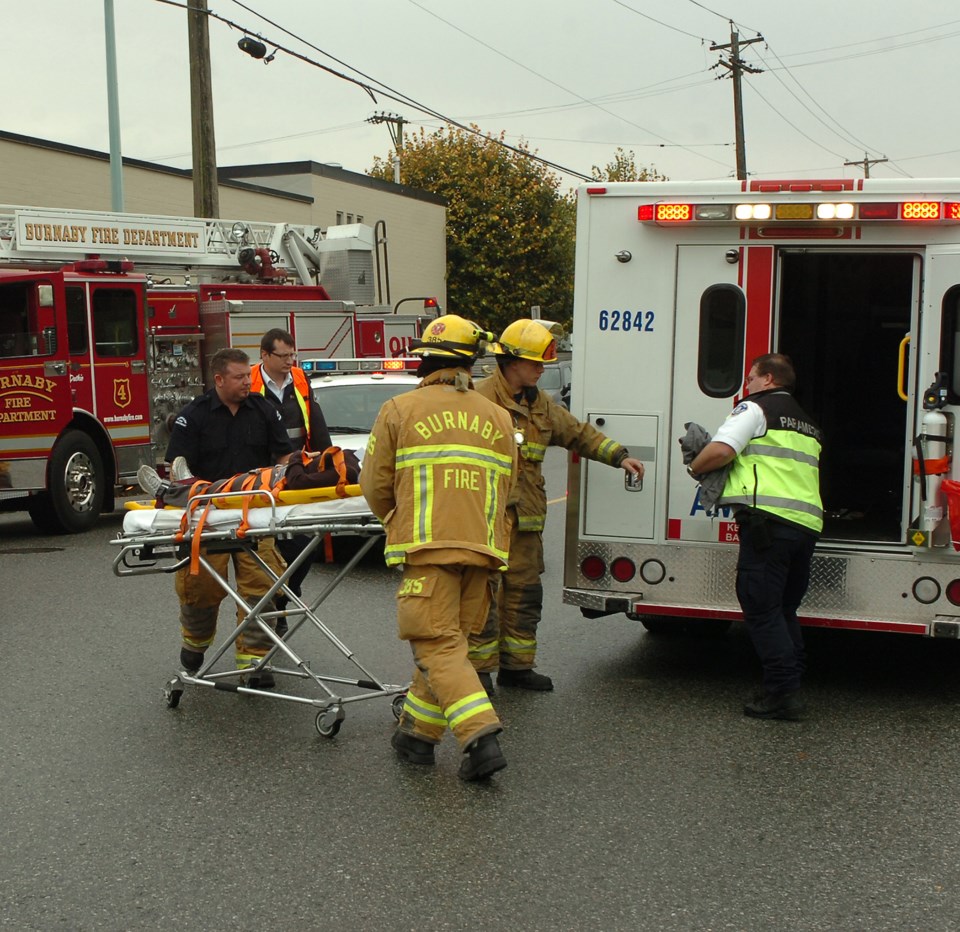The Burnaby Fire Department continues to question changes to provincial ambulance response protocols after local firefighters had to watch a man deteriorate rapidly and go into cardiac arrest during the 21 minutes it took paramedics to arrive.
Initially his case – an upper gastro-intestinal bleed on April 21 -– had been categorized Code 3 (lights and sirens), but it was quickly downgraded to Code 2 (routine).
According to a fire department report to city council last month, ambulance dispatchers kept the patient’s case at Code 2 despite repeated requests from firefighters for a Code 3 response.
“At (3:52 p.m.) dispatch was again called to let them know that we were losing the patient and need BCAS now when the patient collapsed and went into cardiac arrest,” states a report by attending fire captain, Scott Morrow.
The case was one of three presented to city council by fire chief Doug McDonald highlighting incidents where ambulance arrival times "weren’t especially prompt” despite B.C. Emergency Health Services statements that changes to its resource allocation plan last fall have improved response times for more serious events.
McDonald told the NOW last month a potential problem with the protocol changes, which saw 74 types of emergency calls downgraded from Code 3 to Code 2, was that serious calls could be miscoded.
But Emergency Health Services vice-president William Dick, who has been in charge of implementing the changes, told the NOW that shouldn’t happen since calls are upgraded based on firefighter updates.
“Or policy is that if the first responders are on scene and they think that something’s not right, they get an upgrade,” he said.
Burnaby-Deer Lake MLA Kathy Corrigan, the NDP critic for Public Safety and Corrections, now wants Health Minister Terry Lake to order an investigation into the case of the Burnaby man.
“A letter with the details of this case has been in the hand of Dr. Dick of the emergency health services for more than two weeks with no response other than: ‘We’re putting it in the queue of letters of cases that need to be reviewed,’” Corrigan said during question period in the B.C. Legislature Wednesday.
“We want the minister to review the redeployment of resources,” she told the NOW. “We want the minister to take a closer look.”
She’s not alone.
Earlier this month the Lower Mainland Local Government Association, representing 33 municipalities from Squamish to Hope, unanimously passed a resolution stating the changes to the resource allocation plan have “created an unprecedented downloading of costs and risks onto local government first responders.”
The organization called on the province to develop “an effective, well-integrated, patient-centred emergency response service for our citizens provided by fire and rescue services and B.C. Ambulance Service working together.”
Lake, however, argued changes to the resource allocation plan are best practice and based on strong clinical evidence.
His position was bolstered by a recent independent review by retired deputy chief of Toronto Emergency Services Alan Craig, who concluded the new plan is “likely to improve public safety by the careful balancing of risk and benefit.”
In a large emergency medical services system, the report states, there will always be small numbers of “perhaps compelling” examples of unexpected incidents, like high acuity patients assigned a low priority response, but that doesn’t constitute a structural failure of the response plan.
“The task is to minimize their occurrence and to put patient safety monitoring systems in place to detect, review and understand these exceptions,” states the report.



